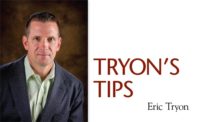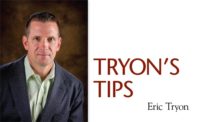In continuation from my column last month I wanted to dig deeper on the topic of focusing on the right levers/drivers inside your business and the potential benefits. Material costs represent one of the largest expense buckets inside a stone fabrication company. The large dollars allocated toward our material costs dictate and warrant our time, effort and focus. A 2 to 3% costs reduction within this category can represent a game changer for most companies. I am going to share a few strategies my leadership team and I drove for years inside my company to reduce material costs.
- Focus on selling more volume in fewer colors.
- Remnant utilization.
- Maximizing yield.
At one point in time, I can remember we had cut more than 250 different colors of products in one month. This was a problem. Our solution to address the problem was to have a sales program that aligned with the strategic initiative to drive more volume into fewer colors.
Framework of strategy: Drive more volume into fewer colors.
- Objective: Drive more volume into fewer colors.
- Benefit expected: More volume in fewer colors allows more opportunities for nesting layouts and utilization of remnants (saving slabs).
-
Tactical initiatives:
- Design a sales program that promotes fewer consistent selections (a sales program drives a customer’s attention and focus verses no program and no guardrails driving a customer’s selections).
- Incentives for a salesperson to focus on selling products inside a program (comp program aligned with initiative).
Remnant utilization and laying out jobs seems to be undervalued and underutilized. The key to engaging this hidden gem is giving the people closest to opportunity to move the needle the training, tracking and rewards that will drive their behaviors day in and day out. Those specific behaviors should be directly aligned with the goal.
Framework of strategy: Maximizing remnant utilization and capitalization of efficient layouts maximizing yield.
- Objective: Slab saving and effective efficient capitalization on remnant utilization.
- Benefit expected: Cutting into fewer full slabs reduces material costs, turns remnants into cash, ongoing sustainable remnant management.
-
Tactical initiatives:
- Incentive program for the people closest to the opportunity to save a slab... (CAD layout personnel, purchasing department).
- For every slab saving opportunity found (nesting jobs, alter seam layout, utilize a remnant) $50 put into a monthly pay-by-performance bonus for this group to split equally at the end of each month.
- The first month of the program a team of four people saved 41 slabs. Bonus payout of $2,050 was split between four people and certainly provided huge Return On Investment (ROI).
- For every slab saving opportunity found (nesting jobs, alter seam layout, utilize a remnant) $50 put into a monthly pay-by-performance bonus for this group to split equally at the end of each month.
- Align compensation plans for the sales team with the desired company objective of reducing material cost. Bonuses were gross margin based. Driving a salesperson’s behaviors to utilize remnants and pay attention to layouts and slab requirements. Give salespeople the autonomy to price jobs based on material requirements and yield. All full slabs cut into get cost allocated to the job they were cut. In other words, the full accounting expense burden of a slab is allocated to only one job. Remnants would then carry no material cost for a salesperson’s GM commission bonus. When a GM-compensated salesperson understands utilization of remnants adds no material costs to their job, they will hunt and find the opportunities (to their benefit and the company).
- Incentive program for the people closest to the opportunity to save a slab... (CAD layout personnel, purchasing department).
For years, these few strategies paid massive benefits toward reducing the material cost and large dividends driving company profitability. I was fortune enough to see the quantitative impact these strategies had on the bottom line by playing the role of a “Monday morning quarterback.” When I retired from day-to-day operations back in 2018, most of these strategies were retired with me as the new owners and the leadership of the organization had different opinions, agendas and strategies on the key drivers in this area.
I was always confident and knew the results generated from the strategies and programs I outlined here were significant. However, when I witnessed what happened to material costs expenses when the programs were removed, I was even more pleasantly surprised. 12 months after my retirement, and the sunsetting of these specific programs, the material cost expense line (for the same locations and team) dramatically increased and jumped up 7%.
Focusing on the right levers and driving the right behaviors, with the right people, can be a game changer. I encourage everyone to take the time and evaluate the opportunities inside your business. It can be the difference between make or break.
Cheers,
E. Tryon



